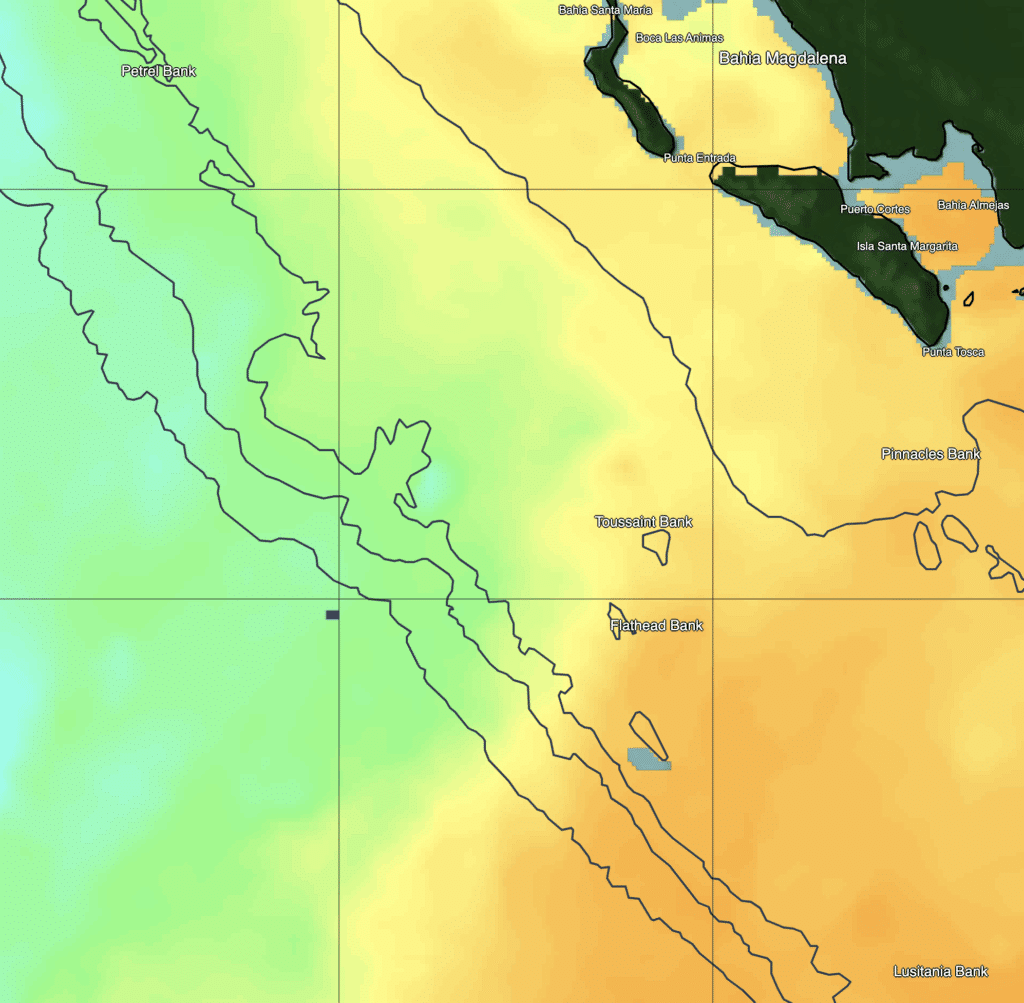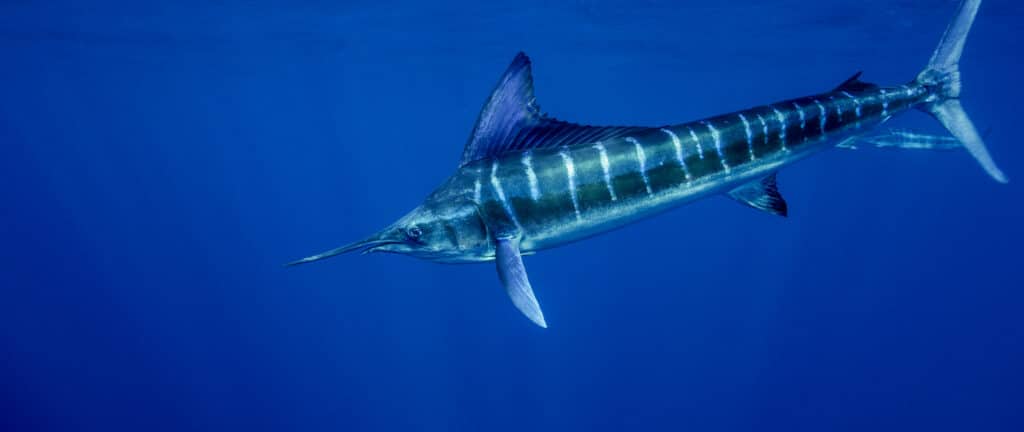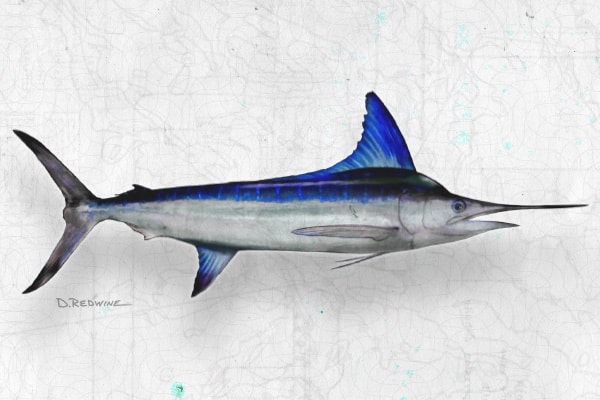Tetrapturus audax
Family:
Istiophoridae
Other Common Names:
Striper, Nairagi, A‘u, Makijki, Barred marlin, Spikefish, Striped swordfish
Description
The striped marlin is found in tropical to temperate Indo-Pacific oceans. It is a highly sought-after game fish. The striped marlin gets its name because of its color pattern. It has a white undertone and a dark blue back. It looks like most marlin in body shape, but what makes it so distinct is the white/black ringed tiger-like stripes running parallel down its full body.
Ideal Conditions for Striped Marlin
SatFish maps show you where to find ideal conditions for Striped Marlin:

- Sea Surface Temperature:
65-82°F / 17-30°C
(68-76°F / 17-23°C is ideal) - Water Color / Chlorophyll:
Clean blue to purple, 0.00 -0.01 mg/m3 - Bathymetry:
Offshore canyons, islands, banks, and ledges where upwelling occurs, aggregating large masses of baitfish.
Striped marlin are highly migratory predators that thrive in warm, nutrient-rich waters. They’re often found near offshore seamounts, banks, and along pronounced temperature breaks where upwelling brings baitfish to the surface. These areas create natural feeding zones that striped marlin regularly patrol. While they’re not as dependent on floating structure as some other pelagics, they will still take advantage of flotsam, kelp paddies, or debris lines when bait is present. Marlin are visual hunters, and wherever bait stacks up—especially near current edges—they’re likely not far behind.
Striped Marlin Migration Patterns
Striped marlin are highly migratory fish that move based on water temperature, bait availability, and current patterns. They prefer warm, blue water typically in the 70–78°F range and are often found along the edges of temperature breaks, offshore banks, and where currents push bait together.
On the U.S. West Coast, striped marlin show up off Southern California and Baja California mainly from late summer into fall, usually peaking between August and October. Their arrival lines up with warming sea surface temperatures and increased schools of baitfish like sardines, mackerel, and squid, often pushed in by currents.
Baja is one of the most consistent hotspots for striped marlin in the Eastern Pacific. Areas around Cabo San Lucas and the Finger Bank are famous for big numbers during peak season, when upwelling and clean, warm water bring life to the surface. These waters don’t just hold feeding fish — they’re also believed to be breeding grounds, especially later in the year.
In the central Pacific, striped marlin are found around Hawaii year-round, with more consistent action from fall through spring. Here, the warm and stable tropical waters, combined with deep offshore structure and bait-rich zones, make for ideal marlin territory.
While not as structure-focused as other species, striped marlin often hunt near current edges, bait balls, or floating debris where they can ambush prey. Knowing how to read sea surface temperature charts and spot temperature breaks is key to finding them — wherever the bait is, marlin won’t be far behind.
SatFish Regions Where Striped Marlin Can Be Found
- Baja (all regions)
- Southern California (summer – fall)
- Hawaii
- Puerto Vallarta (late fall – winter)

How to Catch Striped Marlin
Striped marlin are solitary hunters or may travel in small groups, especially when actively feeding. When the conditions are right — warm water, bait presence, and structure — you can encounter multiple fish in the same zone.
Here are some proven striped marlin techniques:
Trolling: This is the go-to method for striped marlin. Pulling skirted lures, rigged ballyhoo, or artificial plugs at 7–9 knots works well, especially along temperature breaks, offshore banks, and current lines. Try running a spread with a mix of surface lures and deeper-running teasers to cover different parts of the water column. Raising fish with teasers and switching to a live bait drop-back is also deadly.
Sight Casting: When marlin are on the surface — tailing, feeding, or cruising — casting live bait or a rigged dead bait like a mackerel or caballito can trigger an aggressive strike. Keep a rod ready when you’re slow-trolling or cruising near known marlin zones.
Live Bait Slow-Trolling or Drifting: If you’re marking fish or see tailers, slow-trolling live baits like mackerel, sardines, or skipjack is highly effective. Drifting live bait near areas like the Finger Bank or 1150 Spot (Baja) is a common tactic when marlin are feeding deep or not responding to lures.
Bird Activity & Bait Balls: Look for working birds, especially frigatebirds, hovering over bait — marlin often use these bait balls to feed. Unlike tuna, they don’t “foam,” but you may spot them slashing bait at the surface or making passes under the school.
Bill Sightings & Tailing Fish: Keep your eyes peeled. Striped marlin often cruise near the surface with their dorsal and bill exposed, especially in calm seas. These are prime opportunities to pitch a live bait and get an immediate reaction.

Resources & Further Reading
NOAA Fisheries – Striped Marlin


